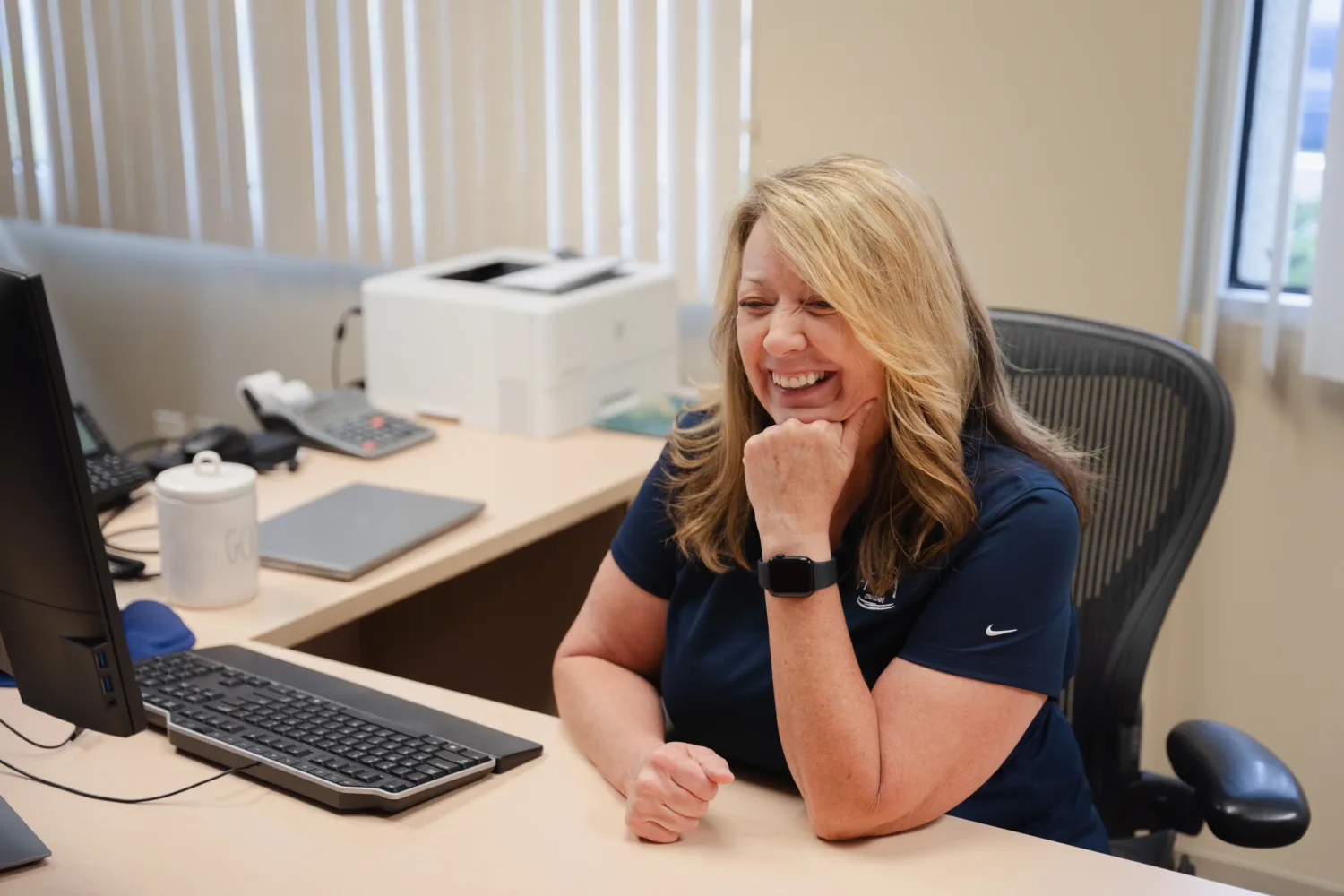What Is Industrial Hygiene?
Occupational hazards take many forms. Whether it’s heat stroke, heavy machinery, harsh chemicals or psychological stress, these hazards pose a serious risk to worker safety. That’s where industrial hygiene comes in.
Industrial hygiene is the science and practice of anticipating, evaluating and controlling workplace conditions that may cause injury or illness to workers. Here’s how it works:
- An industrial hygienist starts by identifying environmental hazards, such as chemical, physical, biological and ergonomic risks in the workplace. Through detailed exposure assessment, they also focus on lab safety protocols and evaluate hazardous chemical handling practices.
- They then assess employee exposure levels to ensure they remain within safe limits.
- Finally, they help the company implement control measures to reduce or eliminate these dangers, often collaborating with certified industrial hygienists or governmental IH professionals.
With a robust industrial hygiene program, you can protect worker health, minimize potential hazards and ensure compliance with regulations set by agencies like OSHA. But does your workplace really need one?
Do You Actually Need an Industrial Hygiene Assessment?
Regardless of your work environment, investing in regular industrial hygiene evaluations benefits you, your workers and your organization. How exactly?
- Protecting Worker Health and Safety: The primary goal of industrial hygiene is to safeguard workers by identifying and mitigating risks. By proactively addressing hazards, organizations can reduce workplace injuries and illnesses, improving overall safety.
- Reducing Liability and Sick Days: A well-maintained industrial hygiene program can help organizations reduce the number of worker compensation claims, legal liabilities and sick days taken due to workplace injuries or exposures.
- Ensuring OSHA Compliance: Regular industrial hygiene evaluations ensure that businesses remain compliant with OSHA standards, avoiding costly fines and penalties. Staying compliant also improves company reputation and fosters a culture of safety.
- Promoting Employee Wellbeing: When employees see that their employer is committed to their safety and health, morale improves, leading to greater productivity and retention rates. Workers feel more secure knowing that their health is prioritized.
More than improving employee health and your bottom line, industrial hygiene can help reduce the increasing number of fatal work-related injuries each year.
The Types of Industrial Hazards
There is a wide range of hazards that highly depend on your particular work environment. For instance, a construction worker doesn’t face the same occupational risks as an office worker.
Identifying and understanding the unique hazards in your workplace is the first step in protecting your employee’s health and safety. The primary categories of industrial hygiene hazards include:
- Chemical: A thorough exposure assessment helps in early detection of chemical hazards. These include exposure to harmful chemicals such as solvents, pesticides, heavy metals and toxic gasses. Workers can be exposed to these through inhalation, skin contact, or ingestion, leading to various health issues from skin irritation to long-term diseases like cancer.
- Biological: Biological agents, including bacteria, viruses, fungi and mold, can pose serious health risks, particularly in industries like healthcare, agriculture and food production. For instance, exposure to mold in buildings with poor ventilation can cause respiratory issues among workers and potentially harm indoor environmental quality.
- Physical: Physical hazards cover excessive noise, radiation and temperature extremes that can affect worker health. Prolonged exposure to high noise levels, for example, can result in hearing loss, while extreme temperatures can cause heat stress or hypothermia.
- Ergonomic: Ergonomic risks stem from poorly designed workstations or repetitive movements that can cause musculoskeletal injuries. These injuries, such as carpal tunnel syndrome or lower back pain, are common in industries where workers perform repetitive tasks or lift heavy objects. Ergonomic assessments are a core part of occupational safety and promote employee safety and comfort.
- Air Contaminants: Airborne particles, dust, fumes and fibers can affect indoor air quality. Workers in construction, manufacturing, or mining industries are particularly at risk of inhaling hazardous materials like asbestos or silica, which can cause respiratory diseases such as silicosis or mesothelioma. Maintaining proper indoor environmental quality helps reduce such health hazards.
Their Routes of Entry
In addition to recognizing the different types of hazards, it’s also important to understand how they enter the body — this is crucial for prevention.
Generally speaking, there are three ways hazardous material cause harm:
- Inhalation: This is the most common route of entry for chemical, biological and physical hazards. Inhaling dust, fumes, gasses or vapors can result in severe respiratory illness, damage to the lungs and other serious conditions like cancer.
- Absorption: Chemicals or biological agents can also enter the body through the skin, especially if the skin is not covered by personal protective equipment (PPE). Workers handling hazardous materials must use protective clothing like gloves and, in some cases, barrier creams to prevent absorption.
- Ingestion: Although less common, ingestion can occur when workers inadvertently consume hazardous substances. This can happen when food, drinks, or cigarettes are contaminated with hazardous materials.
Once you understand what the potential hazards in your workplace are and how they can impact employees, you have a solid foundation to begin building an industrial hygiene program.
Developing an Industrial Hygiene Program
Creating an effective industrial hygiene program involves six key steps:
1. Request an Industrial Hygiene and Hazard Assessment
The first step in creating a program is to conduct a thorough industrial hygiene assessment. Certified industrial hygienists (CIHs) should be engaged to identify workplace hazards through inspections, air sampling and exposure monitoring.
2. Identify, Communicate and Prioritize Potential Hazards
Next, work with the CIH to identify all potential hazards present in the workplace. This includes assessing risks from chemical exposure, biological agents, ergonomic strains and physical hazards like noise or radiation. List all possible sources of these hazards in a clear, organized manner and communicate them with employees.
Once the hazards have been identified, prioritize them based on the severity of their impact and the likelihood of exposure. High-priority hazards are those that pose an immediate risk to worker health, such as exposure to toxic chemicals or high-decibel noise levels.
3. Create Written Policies and Procedures
As you work on developing solutions and procedures for hazards, be sure to document the industrial hygiene program. This ensures that all hazard identification, control measures and employee responsibilities are clearly outlined. Written procedures should be easily accessible to employees, and management should review them regularly.
4. Implement Control Measures
With policies and procedures in place, it’s time to train employees on industrial hygiene practices and implement safety measures. Control measures fall into three categories:
- Administrative Controls: These involve changing work practices, training employees on hazard recognition and scheduling work to minimize exposure.
- Engineering Controls: These modify equipment or processes to reduce exposure, such as installing ventilation systems to remove airborne contaminants.
- Personal Protective Equipment: PPE serves as the last line of defense. Workers should be provided with appropriate respiratory protection, gloves, goggles and other necessary equipment to shield them from hazards.
5. Monitor and Evaluate Program Effectiveness
Continuous industrial hygiene monitoring and assessments are essential for determining the effectiveness of control measures. Conduct periodic exposure evaluations and air quality testing to ensure that hazards remain under control. Adjust the program as needed based on new findings or workplace changes.
6. Continue Documenting and Reporting
Finally, it’s crucial to maintain accurate records of hazard assessments, control measures, training sessions and monitoring results. Reporting progress and improvements to management and employees helps foster a culture of transparency and continuous safety improvement.
Industrial hygiene is a critical component of any workplace safety program. By identifying, assessing and controlling hazards, businesses can protect their workers and reduce the risk of occupational illnesses and injuries. Developing a robust industrial hygiene program requires continuous effort, but the rewards are clear — healthier employees, fewer accidents and a safer workplace overall.
How Does Your Industrial Hygiene Measure Up?
Every organization should ask itself, “How does our industrial hygiene program measure up?” Regular reviews and assessments can help ensure that hazards are controlled, and employees are safe.
FFVA Mutual offers industrial hygiene services at no cost for policyholders to ensure that your workplace is safe and compliant with OSHA standards. Learn more by attending our Industrial Hygiene webcast and discovering how to safeguard your workforce from workplace hazards.






























